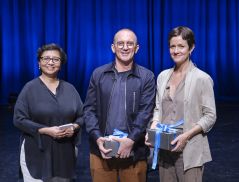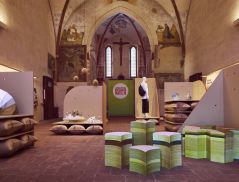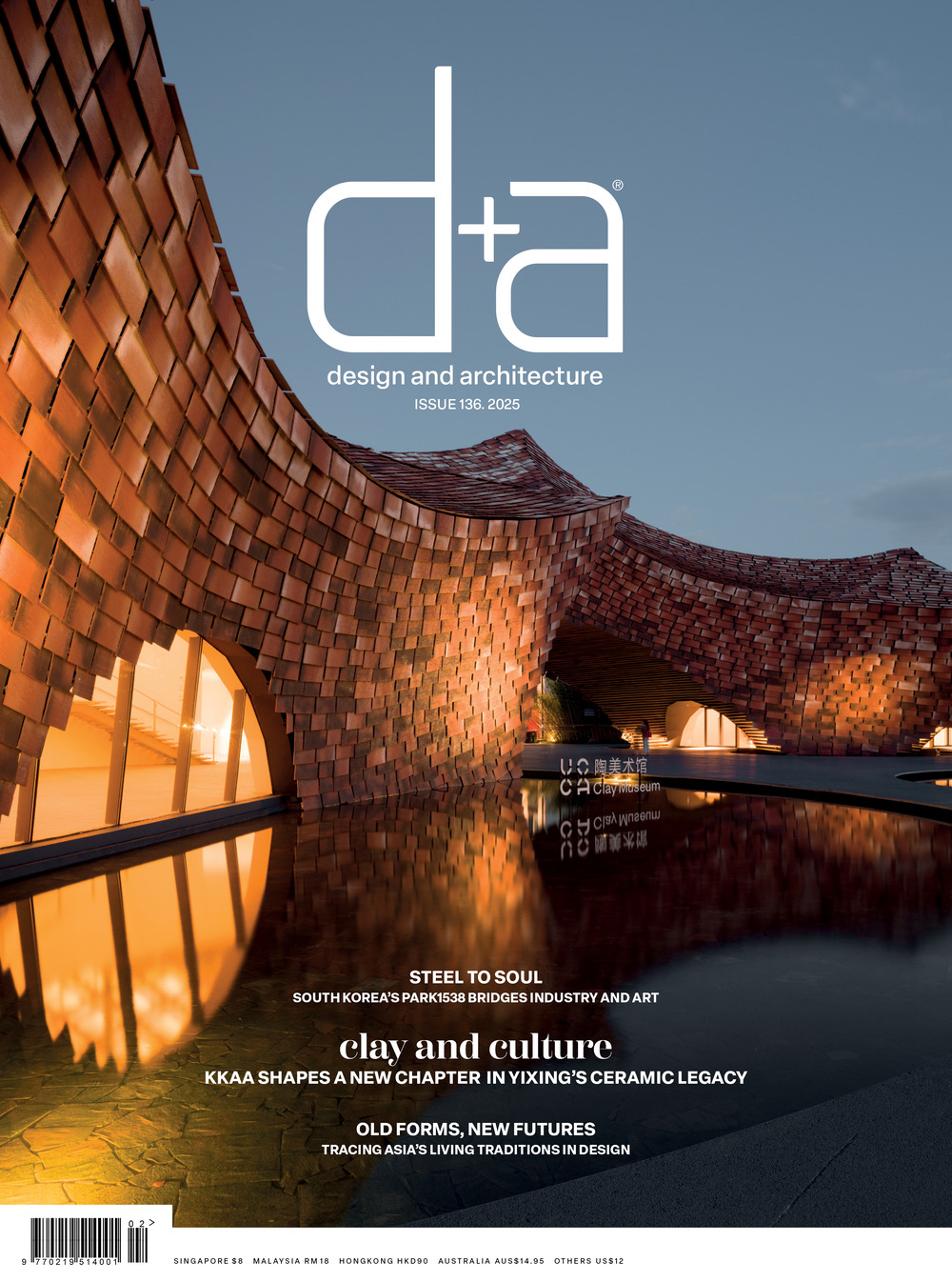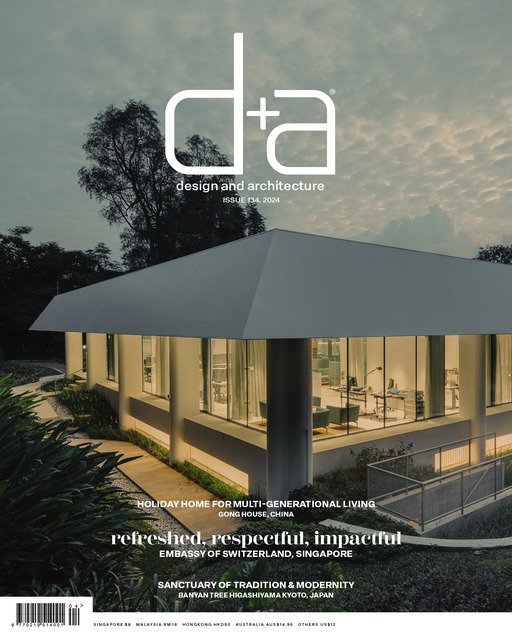
Built on a network of 150 canals and linked by 400 bridges, Venice inspires a sense of wonder that never really goes away no matter how many times you visit. The incredibly fragile city also provokes one to think about the adverse effects of climate change and what we, as humans, can do to reverse it.
This tension shows why the City of Canals is the best place to host the International Architecture Biennale, the most prestigious gathering of architectural minds. The 19th edition is curated by Carlo Ratti, renowned for his work that sits at the intersection of architecture, technology and urban planning. It’s no surprise then that the 2025 theme — Intelligens. Natural. Artificial. Collective — also explores how AI and technology, human ingenuity and the power of nature can come together to shape the future for the better.
We got a taste of it upon entering the main pavilion, where we were greeted by darkness and heat from air conditioning exhausts — an installation that’s an obvious statement on the perils of a warming world. Further into the hall, however, there were innovative ideas that could provide solutions to current challenges.
The scale of this biennale is unprecedented: 66 national pavilions, 300 projects and input from 750 participants. While most of the exhibitions are set in the Arsenale and Giardini districts, Ratti has also ensured that initiatives are scattered throughout the city. Planning to visit La Serenissma this year? Here are a few highlights to add to your itinerary.
‘Heatwave’ by Kingdom of Bahrain


Almost every day we’re bombarded with stories on record-breaking temperatures, and this new norm is what Bahrain’s national pavilion addresses head on. Entitled ‘Heatwave’, the site-specific installation curated by architect Andrea Faraguna looks at the design of public spaces and passive cooling strategies. The low-slung building features a ventilation system that funnels air — and a sense of comfort — to extremely hot areas. Rooted in reality but positing experimental solutions to tackle extreme heat conditions, the pavilion was given the Golden Lion for best National Participation 2025.
‘Geology of Britannic Repair’ by Great Britain

The first thing that catches your eye is a veil covering the facade, then you’re led inside what is essentially a giant compass. The Great Britain pavilion is full of intelligent surprises, a result of the first-ever collaboration of British and Kenyan creatives namely Nairobi-based architects Cave_bureau, curator Owen Hopkins and theorist Kathryn Yusoff. Envisioned as a dialogue between the two countries, the exhibitions explore “how architecture plays a role in the geological afterlives of colonialism.” Sponsored by The Dalmore and British Council, the initiative was awarded a special mention by Golden Lion - Special Mention (National Participation) this year.
Elephant Chapel by Boonsem Premthada Architecture
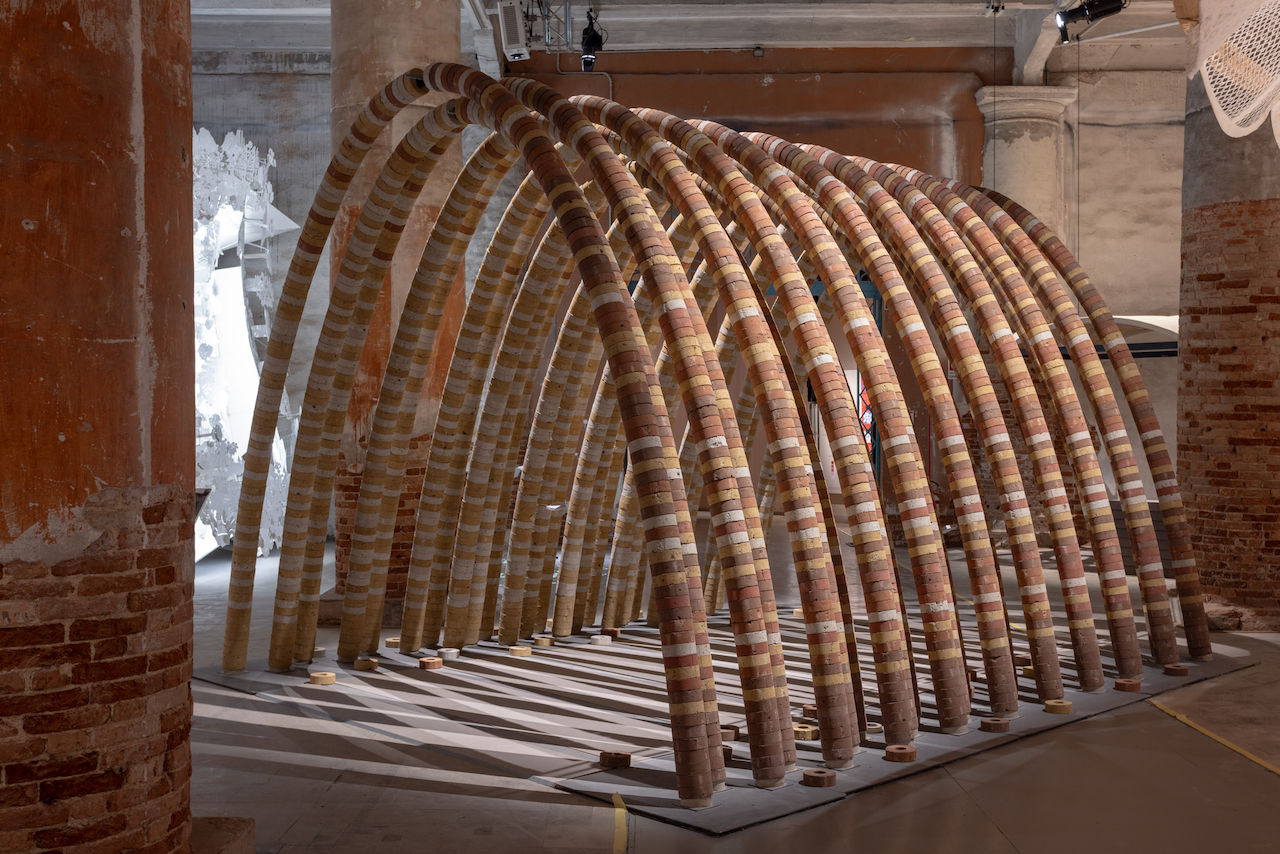
The construction industry is the most carbon-intensive sector (more than aviation and cruising combined), so finding sustainable materials is paramount to reduce its negative impact. This whimsical installation offers an answer: Elephant Chapel, a 4-metre arch built from light, durable bricks made from elephant dung. The earthy materials mimic the look and feel of mud-brick — a building material used in ancient buildings worldwide. Conceptualised by Bangkok’s Boonsem Premthada Architecture, this seemingly simple structure is a playful and practical take on circularity in construction.
Canal Cafè
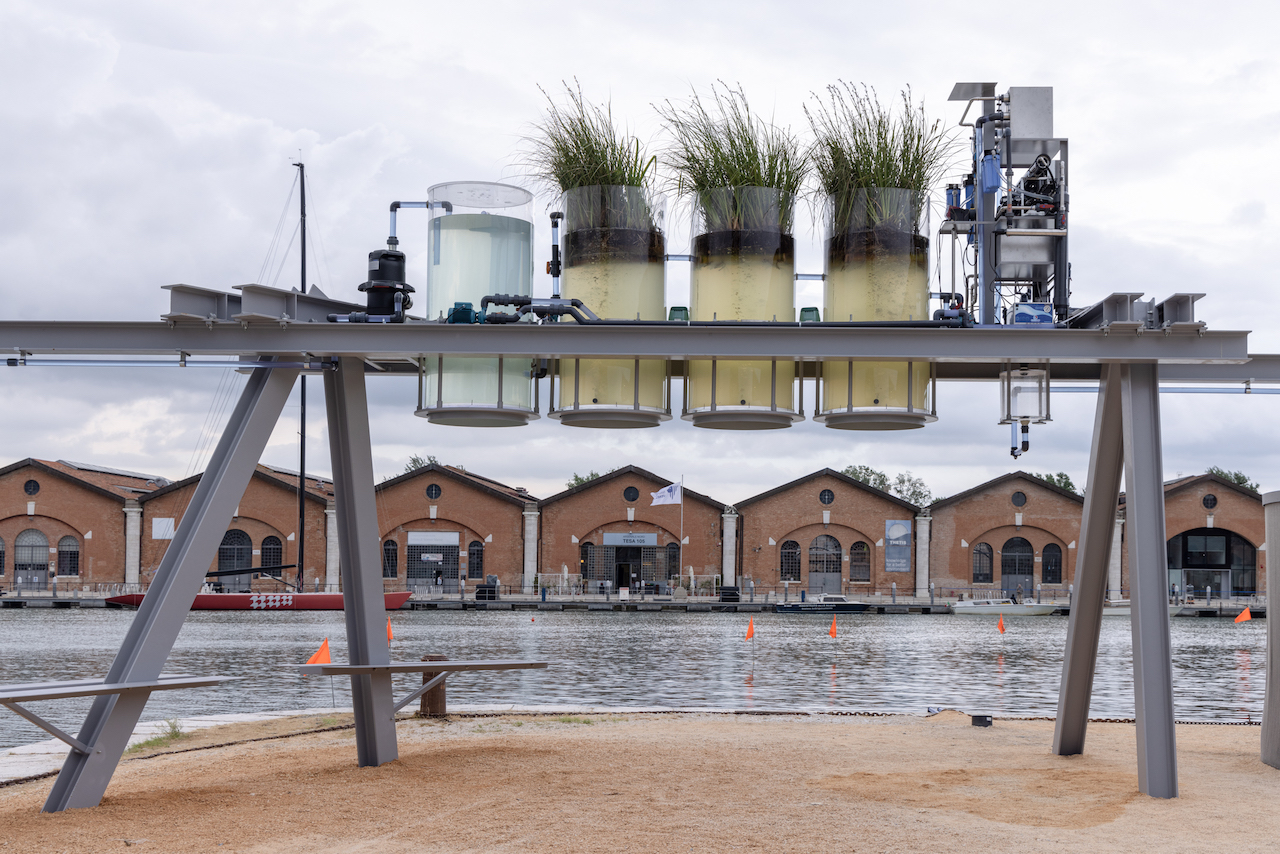
What if you can transform Venice’s grey-blue lagoon water to be pure enough to make coffee? That’s the premise of Canal Cafè by Diller Scofidio + Renfro, which set up a lab-like area at Arsenale that showcases real-time purification to create potable water. The machinery draws water from the canal itself, which goes through an artificial wetland that naturally filters the water but retains its minerals. Then, the water is treated with reverse osmosis and UV light to kill germs. The brave and curious can actually order a coffee this year, and it’s no wonder why this innovation won the Golden Lion for the Best Participation.
Hong Kong Pavilion: Projecting Future Heritage
Though the biennale tackles AI and technology, a lot of the projects actually dove deeper into craft. Case in point: Hong Kong’s pavilion, which looks beyond the city’s striking skyscrapers and champions the ubiquitous bamboo structure that often wrap a building under construction. Curated by Fai Au, Ying Zhou and Sunnie SY Lau, the pavilion also showcases drawings of community centres and public housing created by Hong Kong architects.
The 19th International Architecture Exhibition will be held until Sunday 23 November 2025. For more information, visit the official website.


 Share
Share






